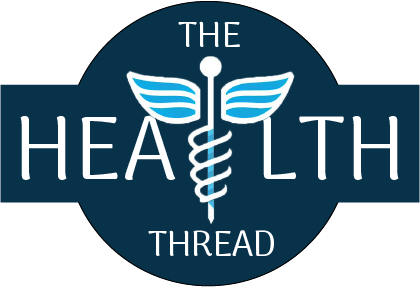Protecting Public Health: Combating the Dual Challenge of Pesticide Contamination in Nepalese Vegetables

Written By THT Editorial Team

Reviewed by Sanjogta Thapa Magar, Food Microbiologist
Recent disclosures of excessive pesticide residues in vegetables, whether locally cultivated or imported, have raised significant apprehensions regarding the safety of Nepal’s food supply. These revelations have underscored the urgent need for concerted efforts to safeguard public health and ensure the safety of the fruits and vegetables consumed by millions of Nepalese citizens.
Revealing the Danger
The presence of hazardous pesticides residues in vegetables poses significant risks to human health, leading to both acute and chronic health effects. Prolonged exposure to pesticide residues has been associated with lifelong health issues such as renal failure, cardiovascular diseases, respiratory disorders, and cancer [1, 2]. Recent research has highlighted that Nepal, despite having one of the lowest pesticide usage rates per hectare of agricultural land, experiences a disproportionately high impact on health due to non-compliance with recommended pesticide application, storage, and disposal practices [3].
Government Response and Accountability
While the Ministry of Agriculture and Livestock Development (MoALD) has asserted uniform standards for both imported and domestic vegetables, delays in implementing comprehensive testing protocols have drawn criticism. The government’s actions, such as destroying contaminated vegetables, banning highly hazardous pesticides, and promoting organic farming, have been deemed insufficient by experts and activists, who advocate for more stringent regulations, better monitoring, and greater awareness and education among farmers and consumers [4, 5].
Consumer Concerns and Safe Practices
Consumers are confronted with the pressing issue of minimizing their exposure to harmful residues. They can take proactive measures such as:
Opting for organically grown produce to reduce pesticide exposure, as organic farming practices minimize the use of synthetic pesticides and prioritize natural pest control methods [7].
Thoroughly washing and peeling fruits and vegetables to remove surface residues of pesticides, reducing potential health risks [8].
Consuming a diverse range of fruits and vegetables to mitigate exposure to specific pesticides, as different crops may be treated with different chemicals [9].
Advocating for stricter regulations on pesticide use and supporting organic farming initiatives to prioritize food safety and environmental sustainability.
Collaborative Solutions for a Safer Future
Addressing the issue of pesticide contamination in vegetables necessitates collaborative efforts from all stakeholders. Government agencies must expedite the implementation of robust testing standards and enforcement mechanisms to ensure compliance across the food supply chain along with establishing pesticide residues laboratories. Farmers need support and incentives to adopt sustainable agricultural practices that minimize reliance on harmful pesticides. Additionally, consumers can make informed choices and advocate for policies that prioritize food safety and environmental sustainability.
Conclusion Pesticide Residues laboratories strengthened
The discovery of excessive pesticide residues in vegetables serves as a stark reminder of the complex challenges facing food safety in Nepal. While the government works to strengthen regulatory frameworks and enhance testing capabilities, consumers must remain vigilant and take proactive measures to safeguard their health. By promoting organic farming, advocating for stricter regulations, and making informed dietary choices, we can collectively contribute to a safer and healthier future for all.
REFERENCES
- Thapa, K., & Pant, B. R. (2015). Pesticides in vegetable and food commodities: Environment and public health concern. Journal of Environmental Health Science and Engineering, 13(1), 59
- Qian, G., Wang, L., Wu, Y., Zhang, Q., Sun, Q., Liu, Y., & Liu, F. (2013). A monoclonal antibody-based sensitive enzyme-linked immunosorbent assay (ELISA) for the analysis of the organophosphorous pesticides chlorpyrifos-methyl in real samples. Analytical Methods, 5(15), 3819-38251
- Karki, R., & Dangol, K. (2023). Pesticide use and health effects among Nepalese farmers: A cross-sectional study in Tokha municipality. Indian Journal of Occupational and Environmental Medicine, 27(3), 255-2591
- Food and Agriculture Organization of the United Nations. (2017). Strengthening pesticide management in agriculture in Nepal – TCP/NEP/3502 [Fact sheet
- Atreya, K. (2007). Pesticide use in Nepal: Understanding health costs from short-term exposure. South Asian Network for Development and Environmental Economics1
- Bhandari, G., Zomer, P., Atreya, K., Mol, H. G. J., Yang, X., & Geissen, V. (2019). Pesticide residues in Nepalese vegetables and potential health risks. Environmental Research, 173, 191-2021
- Acoglu, B., & Yolci Omeroglu, P. (2021). Effectiveness of different type of washing agents on reduction of pesticide residues in orange (Citrus sinensis). Food Science and Technology, 41(4), 1125-11331
- Ghimire, D., & Khadka, K. (2023). Consumer willingness to pay for pesticides-free fruits and vegetables (A case study of Bhaktapur district). International Journal of Atharva, 1(1), 83-951




